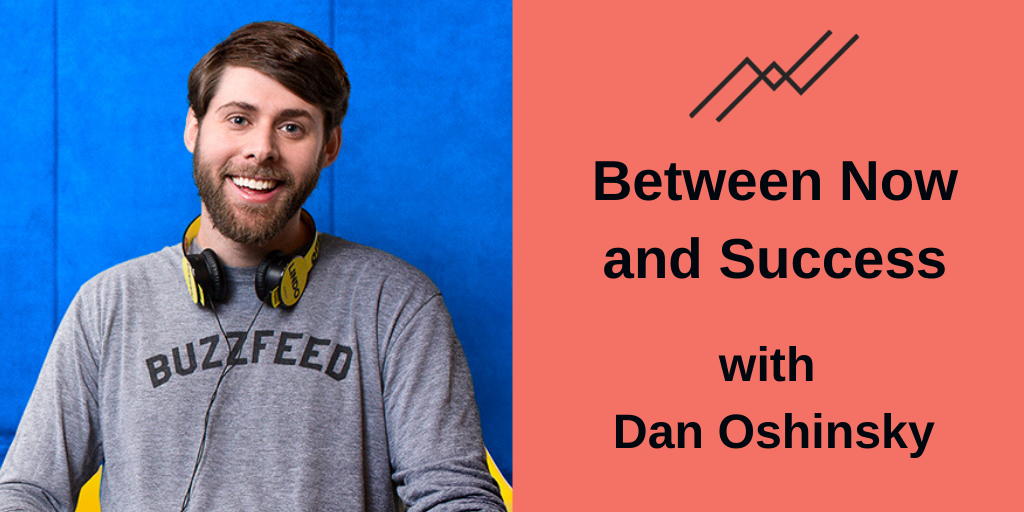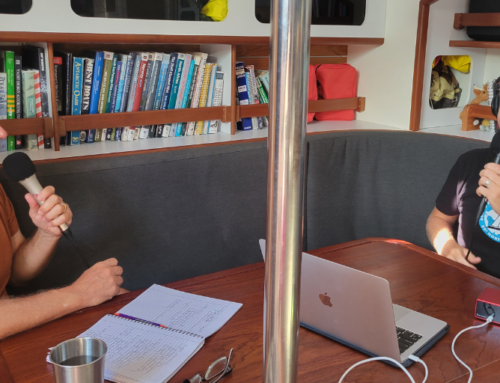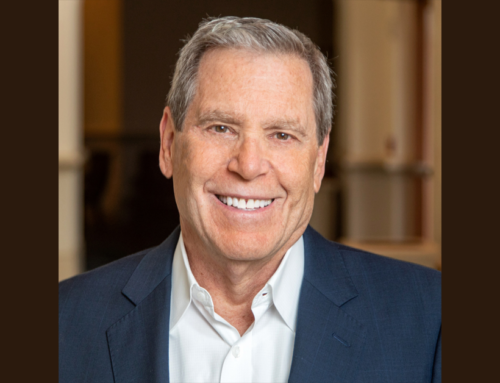Email Marketing is one of the most effective, least expensive, and underutilized marketing strategies available to you right now.
I’m on the record as saying a person’s inbox in the most valuable piece of marketing real estate you can own. When a person gives you permission to show up in their inbox on a regular basis, you can develop a personalized relationship that leads to new business and long-term loyalty.
Now, you might be thinking, “Steve, have you lost your rocker here? Email is so 1990s. Why are you talking about email marketing? Email is dead. We’ve got Facebook, Snapchat, Twitter, LinkedIn, texting, Instagram, webinars and much more, so why are you talking about a dinosaur like email?”
Because it works!
Just like I was early to the podcasting space five years ago when I started Between Now and Success, the next big marketing and education platform is a resurrection of an old one—email.
I started using “electronic mail” back in the 1980s when I worked for corporate giants Caterpillar and Hewlett-Packard. In those pre-commercial internet days, it was a closed loop and I could send mail only to other employees. I thought it was really cool back then and today, it’s even cooler now that your “email” is as unique and ubiquitous as your thumbprint.
To explore email marketing, I invited one of the country’s leading authorities on email marketing, Dan Oshinsky, to my podcast. Dan is the founder of Inbox Collective, an email consultancy that helps brands grow audiences, build relationships, and get results via email.
Previously, Dan was the Director of Newsletters at The New Yorker, where he helped launch new newsletters, optimize their suite of products, and drive paid subscriber growth through email. Dan was also the Director of Newsletters at BuzzFeed, where he built a team that grew newsletters into one of the biggest referrers of traffic to the site and drove 250 million clicks to BuzzFeed. Dan also wrote more than 200 posts for BuzzFeed, including one that hit 1 million views.
To read the rest of the article and learn how to use newsletters to connect with your audience and grow your business, enter your email below.
You’ve (Still) Got Mail
Dan says the death of email is something he’s been disproving since he started at BuzzFeed back in 2012. “Email has stayed this incredibly powerful marketing tool,” he says. “It works because it is so personal. It’s this personal kind of space that people let you into. It’s still a very private digital space, which right now in 2019 is something that people really value.”
I’m not suggesting you cancel all your social media campaigns or stop running Facebook and Google ads. But I would lump those activities in with the “fast things” that technology can mostly automate for you.
Email can be one of the “slow things” that you can use to build relationships with your audience. People are more selective about whom they let into their inbox. They might have hundreds of Facebook “friends,” but they might only subscribe to a handful of newsletters from trusted media and service providers. You want to be on that list.
Tell your clients’ their stories …
At BuzzFeed, Dan engaged the company’s audience by serving up what they wanted.
Cats.
“I pitched a kind of magazine-style storytelling newsletter, This Week in Cats, and everyone laughed,” Dan remembers. “When I left, there were something like 150,000 subscribers on our This Week in Cats newsletter, and every week 45-50% of people who got that email opened it. People loved that newsletter. Cat people are very, very passionate about cats. People identify as cat people.”
At The New Yorker, Dan zeroed in on storytelling—right in the email—as one of the best ways to connect with that publication’s audience. He said it could be as simple as one of their writers taking a story of the week and then writing their own “take” on that issue. It was about, “delivering something interesting and useful right there in the inbox that somebody can read and open and respond to and get excited about,” said Dan.
Dan also developed The New Yorker Recommends, which tips its audience to worthwhile media and events. You could do the same by sending an email with your 5 favorite finance book recommendations, your top podcasts, or your best grilling tips.
While you won’t likely be linking to the latest hilarious cat video, the key idea here is to know what’s on your audience’s mind.
- Who’s your client base?
- What issues around money and retirement come up often in your conversations?
- What groups do they identify with?
What about your prospects? Are you trying to attract new millennial investors with high incomes but few investible assets? Or maybe baby boomers who need help determining if they have enough money to retire? That’s two very different groups of people, neither of whom are going to respond to middle of the road “save more than you spend” blogs.
What’s your specific message to the folks you’re talking to? What’s your specific advice on a specific issue you’re dealing with every day at your firm? What did you read in the Wall Street Journal yesterday that your audience would find informative? What new podcast should they be downloading every week?
What I’m saying is, “find your cat video.”
But probably not an actual cat video.
… and your story.
Like I said at the top, email is personal. The content you’re delivering needs to be personal too. It needs perspective. It needs personality. It needs an opinion.
It needs you.
Five Types of Letters
So, what kind of email letter should you send? For starters, do NOT send a canned email newsletter that takes generic content and packages it into a slick looking mass-marketing email. Instead, consider structuring your letter similar to one of the following five types.
1. Identity-based newsletters.
Who you are. What you care about. What you do for recreation. What your family is like.
Subscribers to my newsletter at https:/www.stevesanduski.com/letter are going to read an eclectic mix of articles, stories, personal takes, links, and videos that I believe can help you be more successful in business and life. And I intersperse it with occasional spots about my love of art, my recent climbing expeditions, what my wife and I have been up to now that the kids are grown, and my interest in learning from sources outside of finance. I hope I’m expressing to readers my personal and professional belief that you have to stay active, curious, and engaged throughout your life, including retirement.
2. Service newsletters.
This is your “New Yorker Recommends.” As you go about your regular reading, watching, and listening, save any links that might interest your audience. In my newsletter, I like to share some of my favorite weekly reads along with my own perspective on the topic. I also try to solicit some feedback from my subscribers on these topics, and I’ll share interesting responses in subsequent newsletters.
3. Utility newsletters.
These kinds of newsletters are more explicitly related to the job you do and how you can help your clients. For example, when I was running Peak Advisor Alliance, I wrote a weekly market commentary that was a folksy take on that week’s market events. It was quite popular because it was timely and it was written in a conversational tone, not a stuffy institutional one.
4. Personality-driven newsletters.
Dan says these kinds of newsletters are about “really expressing yourself, sharing your story, being open with what you’re working on and sharing your unique voice.”
Dan shared a story about a financial advisor friend of his whose personality-driven newsletter makes him stand out:
“He goes every year to the Berkshire Conference in Omaha and comes back and writes this long email to his clients, family and friends, about what he learned from Warren Buffett and Charlie Munger. It’s something I always look forward to and I will always connect him with Warren Buffett because of this yearly note.”
5. Courses.
I’d add courses as a fifth idea to Dan’s list. Use a service like Mailchimp or Campaign Monitor to set up an automated “training program.” At Buzzfeed, Dan’s team used these emails to teach readers a new skill or habit, such as a “Couch to 5K Program” that helped them prepare for a run.
I’ve used this idea successfully with my own company, ROL Advisor. Folks who sign up for our notification list are enrolled in 7 days of training emails that give them some really good content about our program. Click here and enter your email address if you want to see how one of these course campaigns works.
If you’re hesitant to commit to a long-term email newsletter strategy, I recommend you start with a 5 or 7-part course. For example, you could create an email course on “How to be Confident That You Have Enough Money to Retire.” You could then create 5 or 7 emails with a specific piece of content (text, images, links) that sequentially walk your readers through what they need to do/know to be confident they have enough money to retire.
Keep Connecting
Building an audience for a newsletter takes time and commitment. You can start building your list by sending an introductory “letter” to family, friends, clients, prospects, and colleagues. Explain what you’re doing and why you’re doing it. Encourage them to share your content with other folks who might be interested. Give them an option to opt-out.
Then, keep at it. My subscribers get a newsletter every single Tuesday and anyone who replies to my newsletters gets a personal response from me.
Make sure new subscribers to your newsletter receive a welcome email. And in his welcome email, I really love the question Dan asks all new subscribers to his Not a Newsletter, which he believes turns casual readers into real fans.
“’What do you need help with?’ opens up this world of replies,” he says. “I spend probably 15 or 20 minutes every day going through and replying to the emails from new subscribers. We’ll go back and forth and talk about it a little bit, and the people who I do that with are the kind of people who I know come back month over month after month to read more thoughts and are looking to me as an expert in the field or thinking about me when they’re talking about having trouble with email.”
Remember, your newsletter isn’t just about hoarding email addresses for your next marketing push. Your focus is on building relationships and playing the long game.
You can automate the sending of the emails, but you can’t automate the writing and the personal engagement. Like all the best things about your practice, it has to come from you.
Resources
– DanOshinsky.com Read the latest from Dan Oshinsky and his company Inbox Collective, and sign up for Not a Newsletter.
– “Amusing Ourselves to Death: Public Discourse in the Age of Show Business” by Neil Postman Dan Oshinsky says, “it’s one of the best books ever written about media and entertainment and where we we’re going and where we are today.”
– “Shoe Dog” by Phil Knight Add Dan Oshinsky to the long list of my guests who’ve recommended this classic about the founding of Nike.
– Values Clarification Toolkit Click here to download this FREE tool and start living your values.





